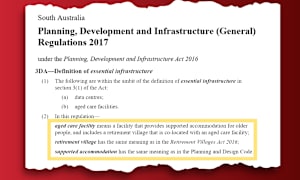Last week PwC Partner Tony Massaro presented the results of their annual survey of retirement villages, in partnership with the Property Council.
Spanning 57 operators, 617 villages and 70,000 units, it confirms again that sales of retirement village homes is a ‘two speed economy’.
From the chart above, just 36% of 571 villages (total 205) increased unit sales last year in a sector still recovering from the loss of trust emanating from the June 2017 Four Corners/Fairfax media blitz.
The sector has to accept that things are not improving for the majority of operators, and ask ‘why is this so’?
If this statistic is reflected across the whole sector, the graph shows that 42% of 2,000 retirement villages – 840 in all – had declining sales. These are big numbers that deserve to be understood and responded to by the sector.
The graph below verifies the problem – number of days to sell a village home (averaged across ALL sales, including the ‘in demand’ 36% of villages).
The line keeps going up despite the increasing distance since ‘Four Corners’. It now takes 33% longer (194 days to 258 days) at 37 weeks or 8 months (average), than before the ABC program.
The question has to be asked – why is it 36% of villages are able to increase sales while 22% are flat lining and 42% are going backwards?
And how long will operators be able to fund buy backs – which under this declining sales environment can only increase in number?
Here may be one answer. Reading the NSW Resident Association (RVRA) Annual Report this week, they discussed the number one area of complaints they got from their 6,000 members: village managers.

For transparency, it was with this background that we launched the DCM Institute earlier this year.
The No.1 marker for resident satisfaction – and positive resident word of mouth sales to their friends – is the performance of the Village Manager.
The simplest investment that an operator can make to generate sales (and ward off the cost of buy backs) is investing in your Village Manager, including training in the soft and hard skills.
12 months into this journey, we identify training is a $4-5,000p.a. budget item for operators. ($2,000 for training and $2,000 for the VILLAGE SUMMIT). And the results are immediate.
You can learn more here on the VILLAGE SUMMIT and the Village Manager Professional Development Program.
Training is also mandated in the NSW Rules of Conduct for ALL retirement villages plus training is a cornerstone in the RLC/LASA Code of Conduct.










